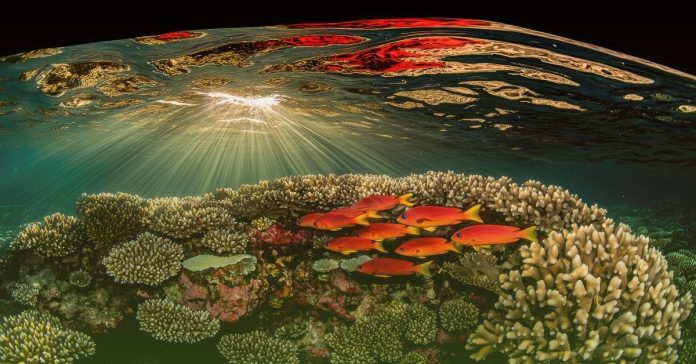Satellite imagery and vessel tracking data confirm that a dredger operated by Dutch firm Van Oord has cut through fragile coral reefs along the coast of Cabo Delgado, part of the infrastructure for TotalEnergies’ liquefied natural gas (LNG) project. The activity comes despite the French energy giant having declared force majeure in 2021 after insurgent attacks temporarily halted operations. Environmental groups now warn that the ongoing construction could irreversibly damage one of Africa’s richest marine ecosystems.
The dredging activity affects sections of the Quirimbas Archipelago, a chain of 32 islands extending from the Rovuma River at the Mozambique-Tanzania border down to Pemba Bay. The area is recognized for its exceptional biodiversity, including critically endangered species such as dugongs, coelacanths, hawksbill and green sea turtles, as well as extensive mangrove forests and estuaries. Experts point out that these ecosystems are already stressed by rising sea temperatures in the Indian Ocean, limiting coral resilience and recovery from physical damage.
Read also: EU opens talks to scale back corporate sustainability rules, redefining CSRD scope for 2026
The total gas potential in the Rovuma Basin has drawn international attention, with four major projects now underway. ENI’s Coral North project remains the only fully operational LNG development, while TotalEnergies’ Mozambique LNG project, ExxonMobil’s Rovuma development, and ENI’s Coral South project have faced delays due to security concerns. In October 2025, TotalEnergies announced plans to lift force majeure, signaling a resumption of work along the Golfinho pipeline, which carries gas from offshore fields to the Afungi export terminal. Despite the previous suspension, satellite monitoring shows dredging continuing through ecologically sensitive areas.

Analysts from Data Desk, a UK-based research group, note that the dredging has produced sediment plumes far larger than those anticipated in the project’s environmental impact assessment (EIA). These plumes can smother coral and seagrass beds, disrupting marine life across a wide area. TotalEnergies’ EIA acknowledged that pipeline construction would necessitate cutting through coral reefs and that recovery could take decades, though limited baseline data on the region’s coral diversity makes the full impact uncertain.
Environmental organizations, including Justiça Ambiental, have criticized the cumulative approach of the EIAs. Each company evaluated its own project’s environmental footprint but largely ignored the overlapping effects of four large-scale LNG operations in close proximity. “The developers were caught flat-footed by the extent of coral and other rich marine environments,” said Louis Goddard, a research analyst at Data Desk. “Building pipelines without significant ecological damage is a very difficult task under these circumstances.”
Read also: Fire disrupts COP30 talks in Brazil, as key climate decisions for Africa await finalisation
The economic stakes for Mozambique are immense. LNG exports represent a potential source of billions in revenue and foreign investment, crucial for a country grappling with persistent poverty and insurgency-related disruptions. Yet the environmental cost is also profound. Coral reefs and seagrass beds support fisheries that feed local communities and underpin tourism in northern Mozambique. Their degradation threatens food security, livelihoods, and the resilience of coastal ecosystems to climate change.
Previous research shows that dredging and construction in reef areas can reduce fish biomass by up to 50% in the first year, while recovery of coral structures can take decades depending on water quality and temperature. The Mozambican government, TotalEnergies, and Van Oord have yet to provide detailed responses to these emerging concerns.
As Mozambique pushes forward with LNG development, the Quirimbas Archipelago illustrates the difficult balance between economic growth and environmental stewardship. The actions taken in the next few years will not only determine the ecological health of one of Africa’s most valuable marine corridors but may also serve as a test case for sustainable infrastructure development across the continent.
Engage with us on LinkedIn: Africa Sustainability Matters





